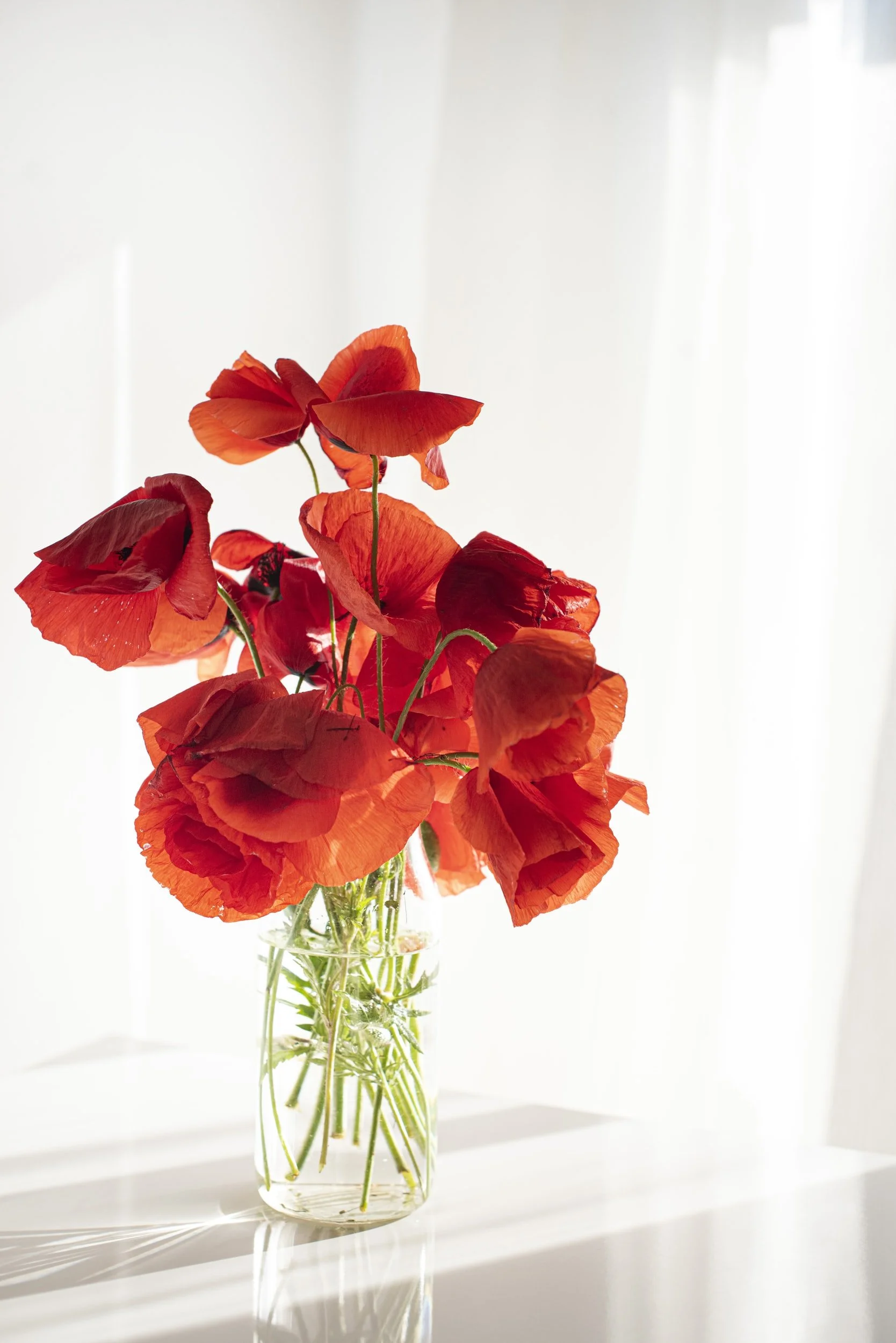Six Things About Poppies You May Not Know
I thought since Remembrance Day is this week, I’d share some things about poppies. Some are about the red poppy and it’s association with Remembrance Day, and some things are about the poppy flower in general.
I thought since Remembrance Day is this week, I’d share some things about poppies. Some are about the red poppy and it’s association with Remembrance Day, and some things are about the poppy flower in general.
During WWI, poppies stopped growing in the fields because of the bombing and the trampling of soldiers over the battlefields. This lasted for four years. After the war the fields erupted in an overwhelming display of red poppies.
Poppies should be worn on your left side, as close to your heart as possible.
Have you ever noticed that Queen Elizabeth wears 5 poppies? The reason for this has never been confirmed but it’s thought they represent the five services in the war - Army, Navy, RAF, Civil Defence, and women.
The meaning of poppies is restful sleep and remembrance.
Poppies aren’t only red. They come in white and shades of pink, yellow, orange and purple.
Poppies make a great addition to a bouquet, but they have a relatively short vase-life - average of five days.
In Flanders Fields - John McCrae (1872-1918)
In Flanders fields the poppies blow
Between the crosses, row on row,
That mark our place; ;and in the sky
The larks, still bravely singing, fly
Scarce heard amid the guns below.
We are the Dead. Short days ago
We lived, felt dawn, saw sunset glow,
Loved and were loved, and now we lie
In Flanders fields.
Take up our quarrel with the foe:
To you from failing hands we throw
The torch; be yours to hold it high.
If ye break faith with us who die
We shall not sleep, though poppies grow
In Flanders fields.
Five Things to Know About Remembrance Day Poppies
The 11th hour of the 11th day of the 11th month - Remembrance Day. The day World War I ended and the day we remember and acknowledge those who lost their lives in war. As the years go by, it’s more important than ever that we don’t forget those who went before us and what they sacrificed for us. As this is a blog about all things floral, I’m sharing …
A field of poppies
The 11th hour of the 11th day of the 11th month - Remembrance Day. The day World War I ended and the day we remember and acknowledge those who lost their lives in war. As the years go by, it’s more important than ever that we don’t forget those who went before us and what they sacrificed for us. As this is a blog about all things floral, I’m sharing five things about the Remembrance Day poppy.
Your poppy should be worn on the left lapel of your jacket as close to your heart as possible. According to the Royal Canadian Legion, the lapel poppy is a sacred symbol. Wearing it over the heart is a sign of respect. The pin you use to affix the poppy should not obstruct the actual poppy in any way.
The donations received for poppies go towards funding veteran’s needs. We’ve all put money in the little box as we get a poppy, and probably don’t think much about it. But that money is used to directly help veterans if they need financial assistance, housing, long-term care, or have medical needs. That’s something to think about the next time you pop some coins in the box.
The author of the famous poem, ‘In Flanders Fields’, was Canadian. John McCrae was a doctor serving with the Canadian Artillery in 1915. He wrote his poem after the funeral of his friend and fellow soldier. The poppies are a reference to the flowers that grew over the soldiers' graves. It is now one of the most well-known poems in Canada.
The Remembrance Day poppy is not the same poppy that opium comes from. There are many varieties of poppies. The ‘opium’ poppy is native to Turkey, while the poppies in Flanders is native to France. While poppies grow in many colours - white, pink, yellow, orange, red, and purple - it’s only the red poppy that represents Remembrance Day.
There is a protocol of what to do with your poppy after Remembrance Day. As a sign of respect, after a Remembrance Day ceremony, poppies can be removed and placed at the base of the cenotaph or on a wreath. If you’re not at a ceremony, your poppy should be disposed of in a respectable way or stored carefully until the next year.
This Remembrance Day, let’s wear our poppies (over our hearts), and while remembering the pain of the past, have hope for a peaceful future.
“IN FLANDERS FIELDS THE POPPIES BLOW
BETWEEN THE CROSSES ROW ON ROW ...”
First two lines of In Flanders Fields - May 3, 1915, John McCrae



